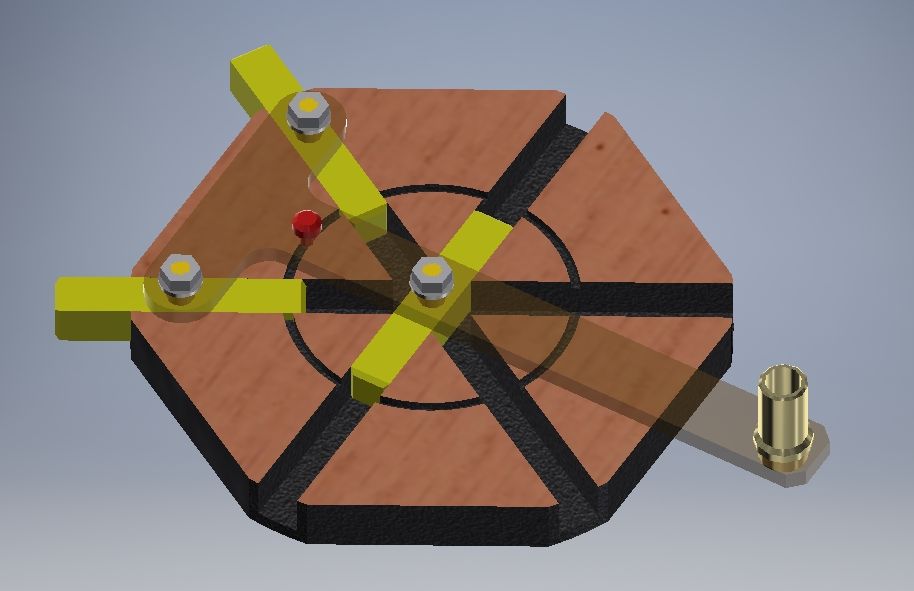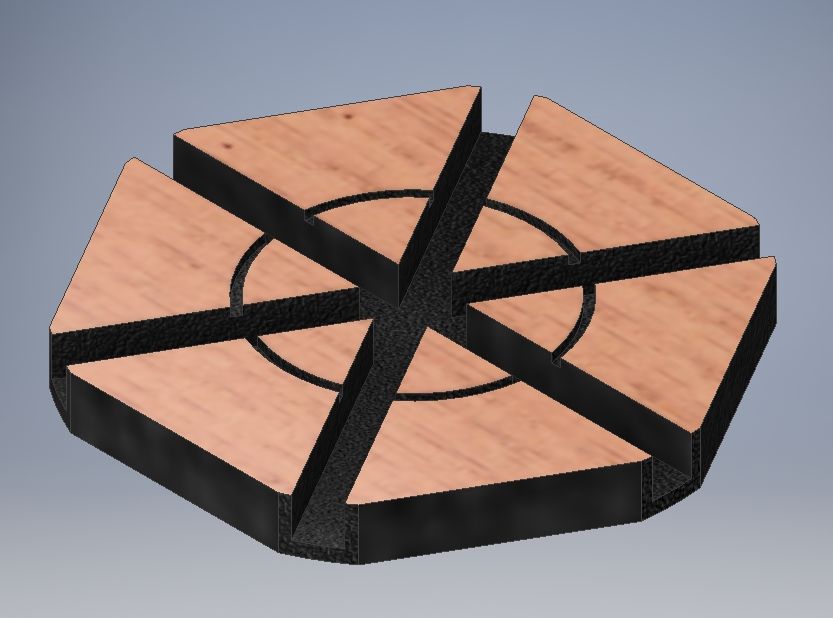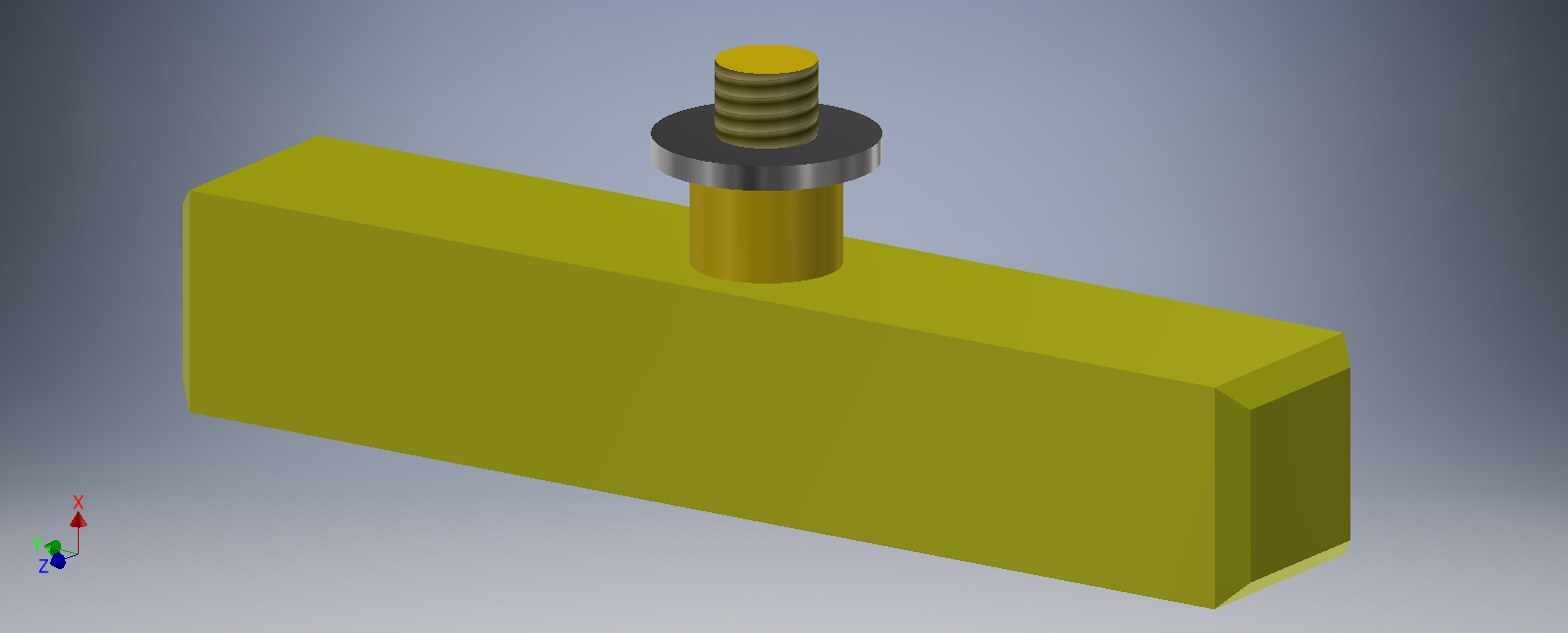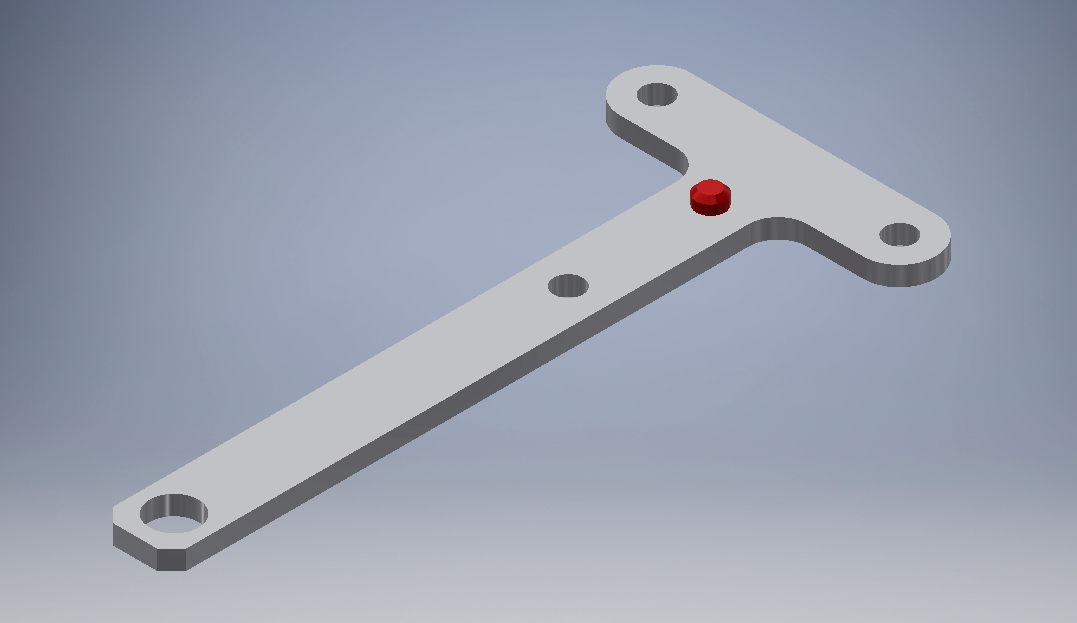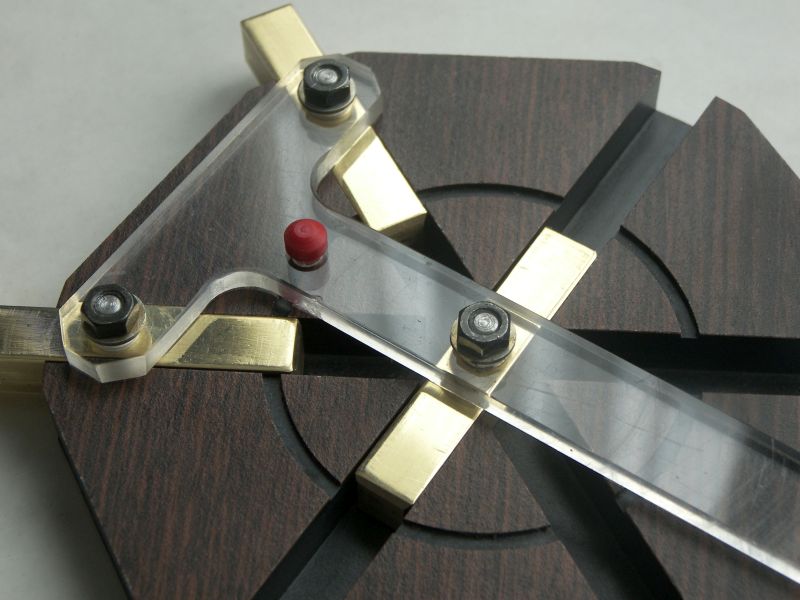My son Marc is a math fanatic and is quite active in that area. Recently he found a YouTube video about a nice mathematical toy that is called a "Nothing Grinder", click here for that video.
He asked me if I could make such a toy for him as a birthday present and of course I gladly accepted that. After studying the YouTube video I thought I understood how it worked and I made my own CAD design, see figure below:
In fact, this toy consists of three fairly simple parts:
1. A plate with 6 milled slots in it at 60 degrees, 9 mm deep and 9 mm wide. For that I used a 12 mm thick Trespa plate with a wood structure as a finish:
2. Three sliders that fit precisely into the slots of the Trespa plate and can slide back and forth smoothly therein. I made these sliders from square 9x9 mm brass rod material:
3. A swivel arm with, among other things, three suspension points for the three sliders. They are simply 6 mm holes at the points of an equilateral triangle with ribs of 50 mm length. I made this swivel arm from a 4 mm thick transparent plexiglass plate:
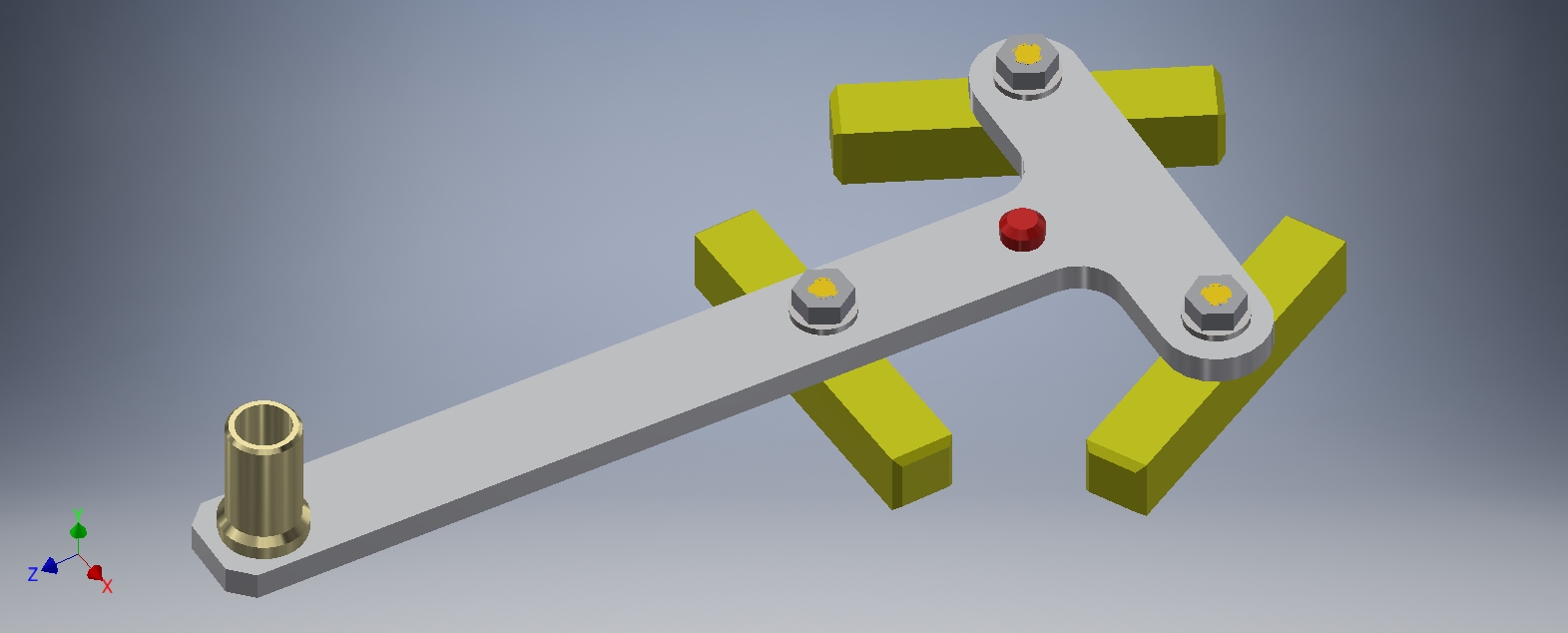
When I had assembled the parts and turned the swivel arm everything turned out to move smoothly as intended, not so strange perhaps, but still a pleasant experience, see the YouTube video below that I made of this toy:
I also made a red plastic pimple on the swivel arm at the only place where a pure circle is described, namely at the intersection of the three heights of this equilateral triangle, in other words the center of gravity of the triangle. According to my son-in-law Maarten (who is also a mathematical phenomenon) that is because the distances from that pimple to the three vertices of the triangle are exactly the same there. He says that a circle is actually a special ellipse in the sense that it only has one radius, it's just how you look at it.
I milled a circle groove in the plate with a radius that is exactly equal to the distance from the red pimple to the center of the plate. On the video you can see how nice this pimple rotates exactly over this circular groove.
In all other places of the arm, the distances to the three angular points are uneven, as a result of which the circle there is deformed into an ellipse. The three angular points of the triangle are the only places where straight lines are described.
There will be people who wonder what you should do with this. But it is like my son Marc says: "You can only look at a painting against the wall and nobody thinks this is crazy. At least you can also play with this thing and hang a more or less mathematical story about it"
Admittedly, it's a toy for math "nerds" that I don't really belong to, I believe.
The 3-page CAD drawing package that I made of this is freely available for every model builder who also have some mathematical interests and perhaps there are; click here for a request.
A 3D printed version designed and made by Maarten Pennings.
Maarten has made a beautiful and all-plastic version with his 3D printer that is driven by a mini electric motor that he bought from Aliexpress. Truly a juwel, see the video below:
